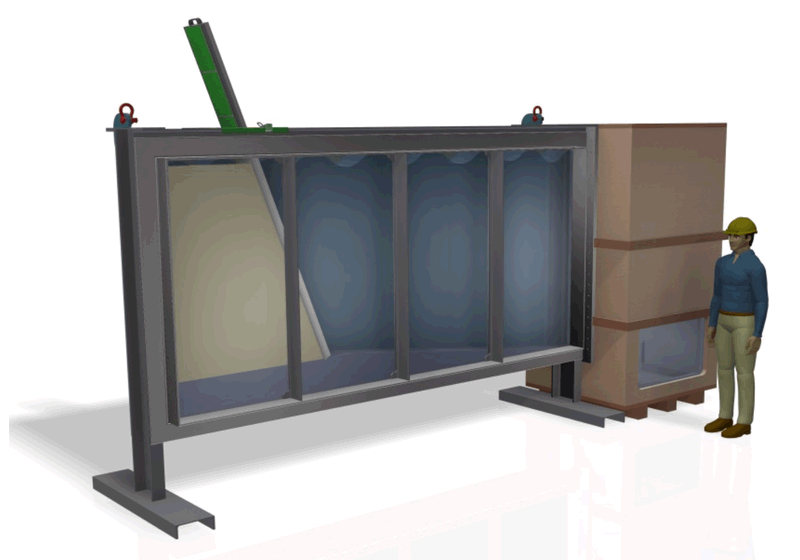Said Alhaddad1*, Robert Jan Labeur1, Wim Uijttewaal1
1 Faculty of Civil Engineering and Geosciences, Delft University of Technology
* This email address is being protected from spambots. You need JavaScript enabled to view it.
Introduction
A flow slide occurs when a large, subaqueous soil mass is destabilized and accelerates down slope, then eventually redeposits as a milder slope. This phenomenon poses severe risk for subaqueous structures and flood defenses along coastlines and riverbanks, which is able to undermine an entire hydraulic structure, resulting in significant unwanted consequences.
Breaching is a gradual, retrogressive failure of a steep subaqueous slope, greater than the angle of repose. This type of failure usually takes place in densely-packed sand due to its dilative behaviour under shear. Breaching flow slides are accompanied by the generation of turbidity currents. This current is driven by excess density versus the ambient fluid; it may increase erosion of the sand surface, picking up more sediment into suspension, thereby increasing speed and erosion potential.
Measurements of breaching-generated turbidity currents are substantial for understanding the interaction between the turbidity current and the slope surface, and validation of numerical models. However, such measurements are scarce in the literature. Therefore, laboratory experiments are planned to be conducted in the water lab of Delft University of Technology.
Methods
An experimental setup was designed specifically for the purpose of studying breaching flow slides (see Figure 1). A densely-packed fine sand deposit up to 1.5m high is constructed with a selected slope, steeper than the angle of repose. This slope is created and supported by a removable confining wall. The deposit is emplaced layer by layer and compacted using a vibrator needle to ensure that the sand porosity is homogeneous and the sand is dense. Breaching is initiated by quickly removing the confining wall from the breaching tank, leaving the deposit at an unstable slope.

Figure 1 3D diagram of the experimental setup
Results and Outlook
The experimental setup has been recently constructed. As yet, two preliminary experiments have been conducted to check the functionality of the setup. The preliminary results and observations show that the sand erosion rate increases in the downstream direction of the slope due to acceleration of the turbidity current. We will conduct a series of experiments with different slope angles in the near future. We plan to obtain velocity and concentration measurements of turbidity currents to understand the coupling of the breaching process and the associated turbidity current.










